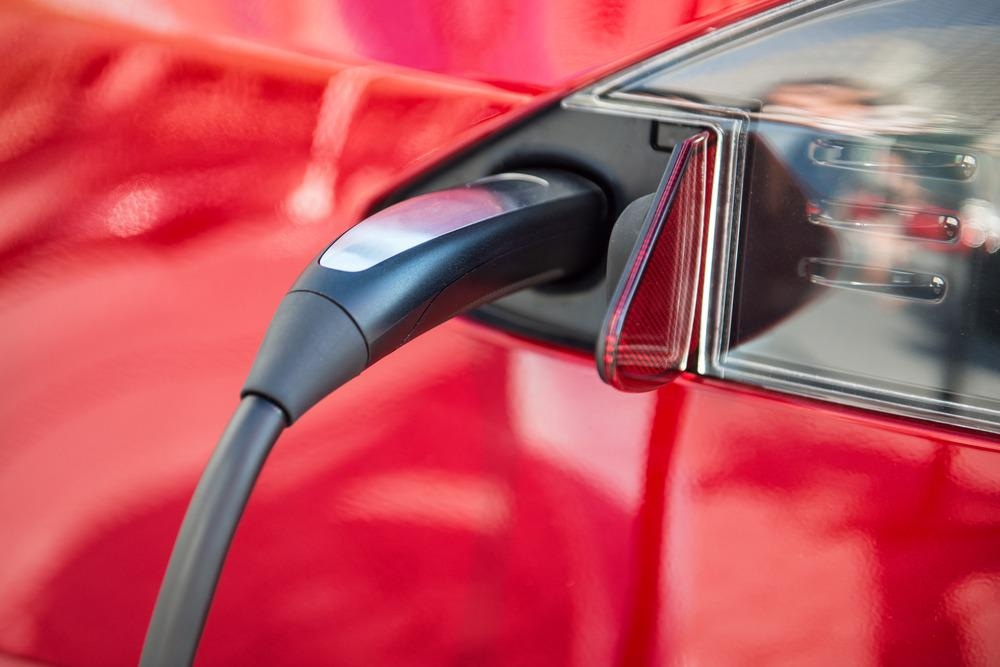
Image Credit: Nick Starichenko/Shutterstock.com
When it comes to electronic devices, there has been a lot of talk over the years about using graphene in batteries. This is primarily because it has high electrical conductivity, high charge carrier mobility, and is highly stable (thermally, physically, and chemically). There has been a particular focus on smaller graphene batteries for consumer electronics, however, Guangzhou Automobile New Energy (GAC) Group has now unveiled a breakthrough graphene battery for electric vehicles (EVs).
The electric vehicle (EV) industry has slowly gained traction over the last decade as society attempts to shift from a fossil-fuel-based society to one that is more sustainable and environmentally friendly in the long-run. Given the growth in the number of cars on the road since the turn of the millennium, a reduction of fossil fuels via the widespread adoption of EVs is a key societal driver for ensuring a more sustainable future.
However, despite the best efforts over the years, challenges have remained within the EV industry. One of the major issues over the years has been the slow charging rate of batteries within EVs, while the other has been the limited range possible with the current gold standard of batteries. While solving both issues will help to propel EVs into the market even further, just tackling one of these challenges is likely to help push more people towards EVs.
For example, the ability to increase the range will mean that EVs will not need to be charged as often, so rapid charging may not be as necessary. Likewise, if the range of EVs does not increase by much, the ability to rapidly charge the battery will be highly valuable, and it is perhaps the rapid charging which is the more important of the two. A lot of options have been touted for rapid charging EV batteries, including various inorganic nanomaterials, but commercial efforts that use graphene are now being realized.
New Graphene Batteries from GAC Group
While many companies have looked to develop graphene batteries for small and consumer electronic devices, GAC Group has developed a breakthrough graphene battery for EVs.
Research into GAC Group’s graphene battery started in 2014. The battery was officially announced in 2019, and the company started to test the battery in production vehicles in 2020. In 2021, the battery entered the mass production testing phase and GAC Group has recently stated that these batteries are due for manufacturing in vehicles from September 2021 onwards.
The company has dubbed the battery as a “super-fast charging battery” that uses 3D graphene (3DG). GAC Group holds intellectual property rights on the production techniques associated with the 3DG, but aside from those working in the company, nobody is sure of the type of graphene being used, nor is the specific manufacturing process clear.
The term 3D graphene is broad, so it could be in the form of graphene aerogel, or it could be a graphene foam (such as in laser-induced graphene), or it could be many-layered graphene—bordering on graphite. It is likely that as time goes by and the battery becomes more widely adopted, the specifics of the battery will become clearer. However, it is known that the method reduces the cost of the graphene used to 1/10 of its normal value using “conventional methods”.
The Performance of the Battery and Its Real-World Use
At this stage, the IP will be protecting the graphene technology. Regardless of the type of graphene used, the battery shows excellent characteristics that could help to solve the charging issues within the EV industry.
Currently, the fastest charging time of any pure-electric vehicle model is around 30 minutes to recharge to 80% battery capacity, however, the graphene battery being developed by GAC Group can achieve the same levels of charge in just eight minutes.
The ability to charge an EV battery to 80% in such a short time, could mean that EVs will be capable of making regular long journeys. The fast-charging graphene battery possesses a 6C fast-charge capability, as well as a 600A high-power charge, and has passed the most stringent safety test—the Battery Shooting Test. Therefore, the battery unit as a whole appears to have a high degree of quality and reliability.
In terms of its commercialization, GAC Group has stated that the fast-charging graphene battery is going to be used in its Aion V vehicles, with production from September 2021 onwards. This will be the first vehicle to feature the battery, so it will be interesting to see how the launch of the vehicle goes, how it performs in real-world use on the road, and whether we will see any other EVs being manufactured with graphene batteries.
References and Further Reading
Graphene Info (2020). GAC to test its "super-fast-charging battery" in production vehicles [Online]. Available at: https://www.graphene-info.com/gac-test-its-super-fast-charging-battery-production-vehicles
Graphene Info (2020). GAC to mass produce graphene-enhanced battery for EVs by the end of 2020 [Online]. Available at: https://www.graphene-info.com/gac-mass-produce-graphene-enhanced-battery-evs-end-2020
Graphene Info (2021). GAC Group announces that its Aion V, sporting a graphene battery, will start production in September 2021 [Online]. Available at: https://www.graphene-info.com/gac-group-announces-its-aion-v-sporting-graphene-battery-will-start-production
GAC Motor (2021). GAC Group achieves breakthrough in graphene-based fast-charging battery technology, vehicle model Aion V equipped with the new battery to start production in September [Online]. Available at: https://www.gac-motor.com/Home/News/content/id/166
Disclaimer: The views expressed here are those of the author expressed in their private capacity and do not necessarily represent the views of AZoM.com Limited T/A AZoNetwork the owner and operator of this website. This disclaimer forms part of the Terms and conditions of use of this website.